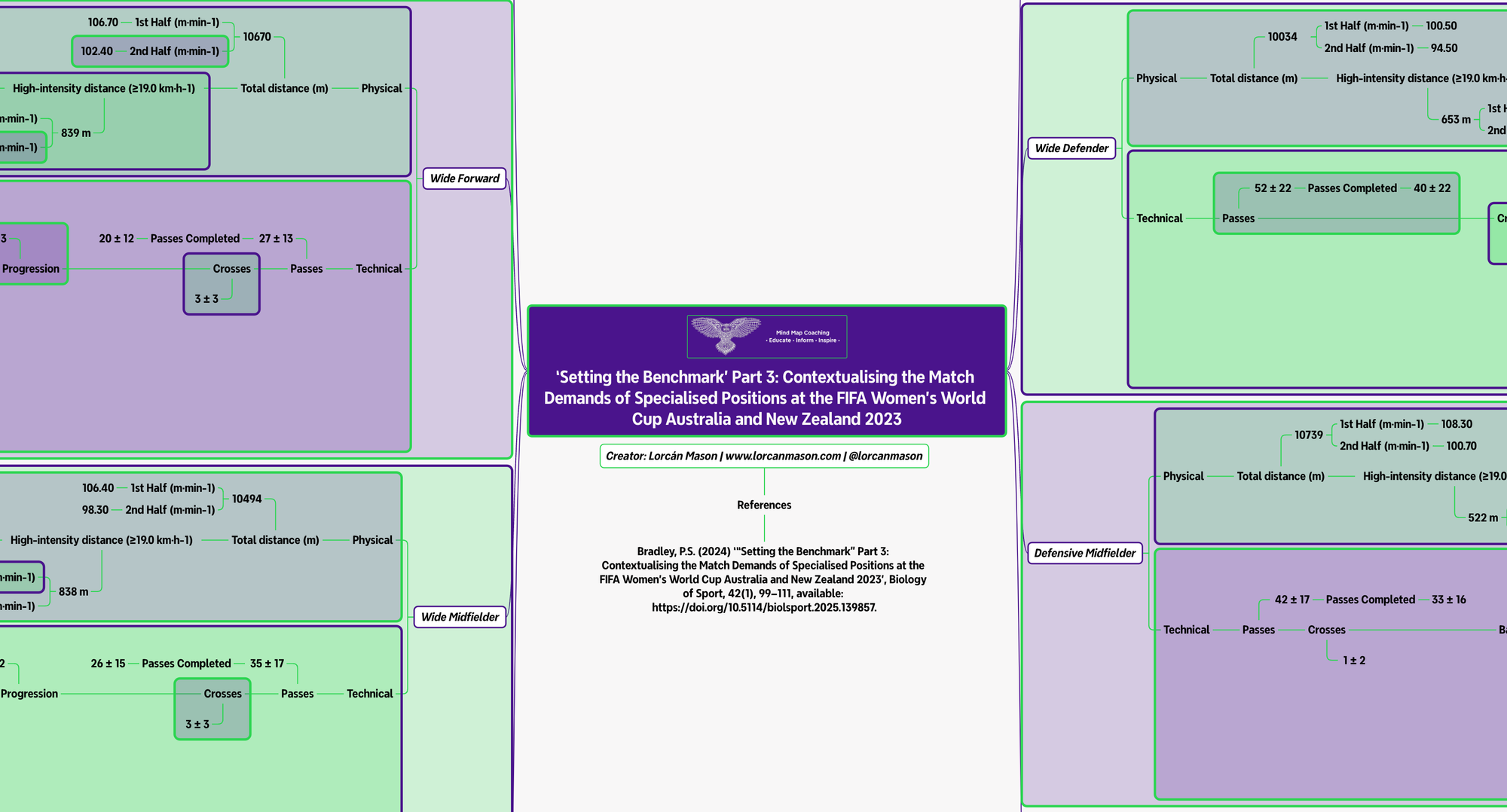‘Setting the Benchmark’ Part 3: Contextualising the Match Demands of Specialised Positions at the FIFA Women’s World Cup Australia and New Zealand 2023
Given such accelerated rates of physical development in women’s football, it is crucial that the match-play characteristics are analysed and documented to offer practitioners more nuanced and actionable positional insights.

Match-play characteristics of women’s football have steadily progressed over time. One area of performance that has evolved exponentially in the women’s game over the last decade is the speed and the intensity of match-play. For example, high-intensity running and sprinting distance have increased by ~20–30% between the Canadian (2015) and French (2019) FIFA Women’s World Cup's.
Given such accelerated rates of physical development, it is crucial that the match-play characteristics are analysed and documented. Findings from such analyses could be valuable to benchmark the current intensity of the female game, while also providing a framework for the development of female-specific drills via the replication of such context-specific demands. There is also an onus on practitioners to be cognisant of modern-day demands, as an intensification of match-play could be one of a multitude of risk factors associated with increased injury prevalence in players.
Gaining a deeper understanding of this latter point could be advantageous given new directives have increased game time since the FIFA Women’s World Cup France 2019. To offer practitioners more nuanced and actionable positional insights, match physical analyses should ideally be layered with context. Thus, this study aimed to benchmark the match demands of specialised positions at the FIFA World Cup Australia and New Zealand 2023.
Reference
Bradley, P.S. (2024) ‘“Setting the Benchmark” Part 3: Contextualising the Match Demands of Specialised Positions at the FIFA Women’s World Cup Australia and New Zealand 2023’, Biology of Sport, 42(1), 99–111, available: https://doi.org/10.5114/biolsport.2025.139857.

